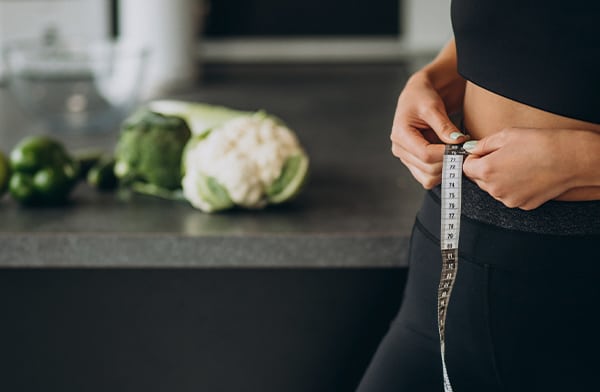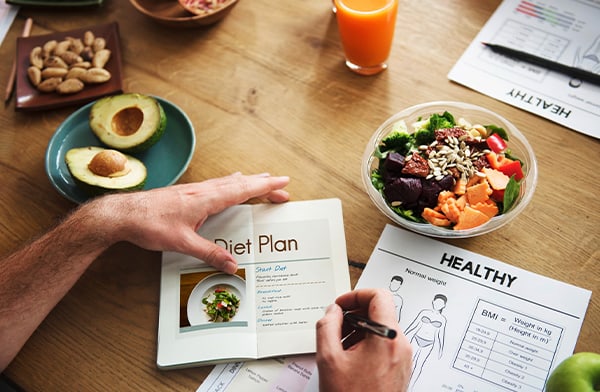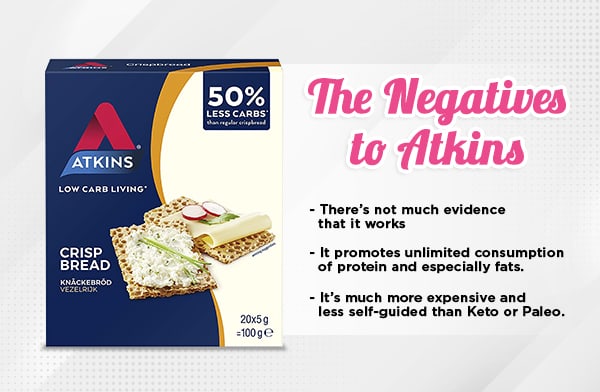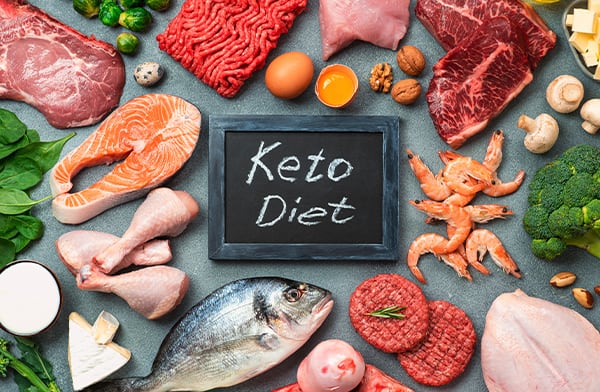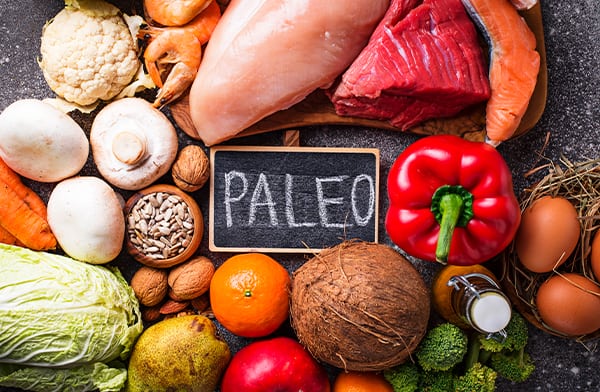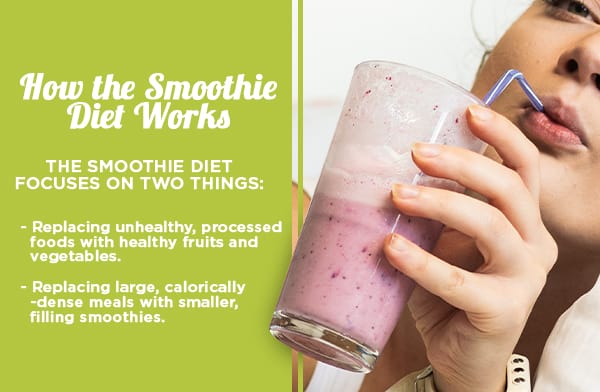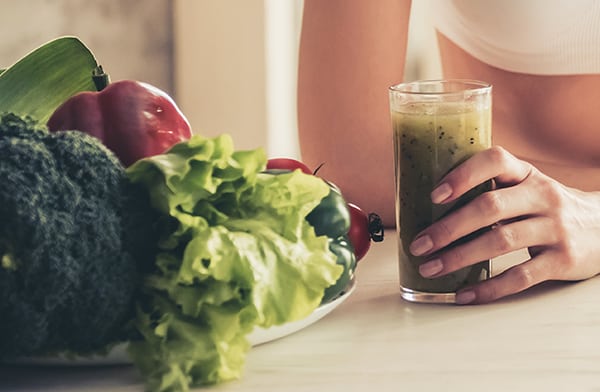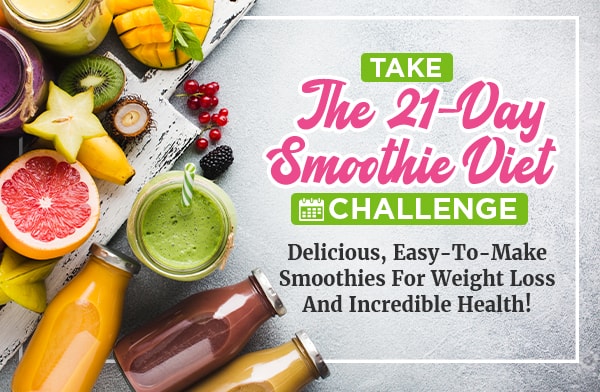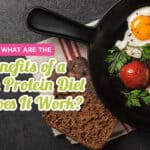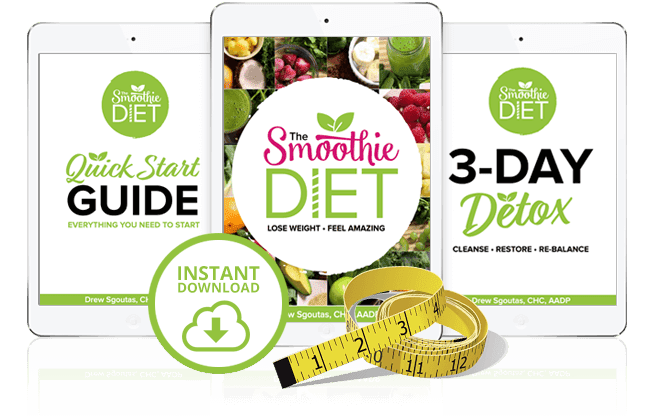Atkins vs Keto vs Paleo vs Smoothie Diet: What’s The Difference?
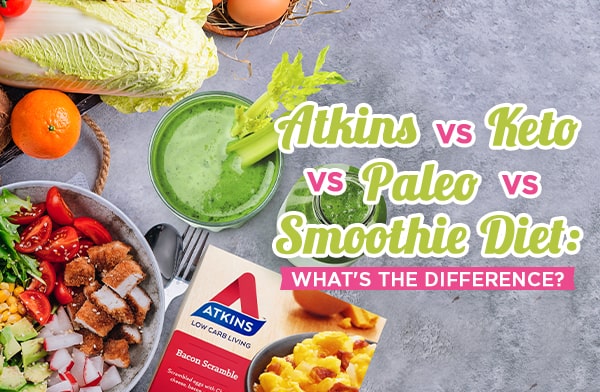
In the world of dieting, there are dozens of different ways to manage your food and try to lose weight. Some of them are much more effective than others. For example, did you know that some people have come up with crazy diets like the “cotton ball” diet, where you eat cotton instead of food? Desperate people will try anything they think can help them lose weight as long as they can avoid the hard work of diet and exercise. (Needless to say, don’t eat cotton balls, it’s incredibly dangerous.)
In the world of more reasonable diets, four names stand out. If you read the title, you already know which four they are: Atkins, Keto, Paleo, and the Smoothie Diet. The question is, what’s the difference between them?
Two Ways to Lose Weight
All weight loss is a result of losing mass. When done properly, that lost mass comes in the form of stored body fat. When done poorly, it can be lost muscle or even bone density, though that kind of weight loss usually comes from medical problems, illness, or nutritional deficiencies and thus can’t really be called a diet. After all, you wouldn’t infect yourself with the flu just to suppress your appetite!
Losing weight can be done in one of two ways. No matter which diet plan you choose, it all comes back to one of these two ways.
- Restricting the number of calories you take in.
- Increasing the number of calories you burn.
That’s it! Calories in, calories out. No matter how you do it, no matter what other nutritional shenanigans or tricks you play on your body, it all comes down to math. Your body needs a certain number of calories to function throughout a typical day. That number is around 1,600-2,400 for women and 2,000-3,000 for men. (The difference is based mostly on muscle mass but is also affected by hormones, height, age, current weight, and more.)
You can increase the demand and burn more fat through exercise. Think driving in a car; your typical commute burns a certain amount of gas, but you can burn more gas if you drive more. The more exercise you do, the more calories you burn, and the more weight you can potentially lose.
Conversely, you can decrease supply and lose weight through caloric restrictions. Eat less, give your body less fuel, and it will need to turn to stored fuel to keep going. The car analogy falls apart here, unfortunately.
Every weight loss plan takes either one or both of these paths to weight loss. Diet plans opt for the caloric restriction route, while exercise plans promote working out to burn more calories, and comprehensive health plans do both.
Neither is better than the other! In fact, you’ll be healthiest if you do both. Restricting calories is passive and doesn’t help other parts of your health, like your flexibility, your cardiovascular health, or your pulmonary health. Conversely, working out doesn’t help you with things like blood sugar or cholesterol if you’re still eating like a gremlin.
Low Carbs Vs. Low Calories
There are other mechanisms for weight loss that can affect how effective a diet or exercise plan is. For example, cardio exercise is much more effective at building a strong cardio system than it is at losing weight. Weight lifting can, at some points, even increase your weight; you lose fat but gain muscle, and muscle is denser than fat.
Diets, too, can affect the body in different ways. Restricting calories simply deprives your body of fuel and forces it to use what it has. However, some targeted diets (like Keto, which we’ll get to) focus on specific bodily processes. The actual bodily process of ketogenesis is the process of converting fat into energy. It only works when there are no available “easier” energy sources, namely carbohydrates, to burn first. Even a tiny lapse in intake can pull your body out of ketogenesis.
Thus, each one of the four diets below operates in a slightly different way. Atkins, Keto, and Paleo are all variations on a “low carb” diet. The Smoothie Diet is not strictly low carb – in fact, it often contains quite a bit of dietary fiber – and works primarily through general caloric restrictions. A 300-calorie smoothie is better than a 700-calorie breakfast, after all.
Before I dig into the details of each diet below, I need to give you one baseline piece of information.
- The “baseline” diet macronutrients are recommended to be 45-65% carbs, 35% protein, and 20-35% fat.
This breakdown of macronutrients is the generally accepted range for a healthy diet. After all, your body needs a balance of all three to function properly, so you can’t cut any one out completely. Even Keto has some carbs in it. I give you these numbers here so you can see how they stand up to the diets below.
How Atkins Works
The Atkins diet is a marketed diet created in the 1970s by Robert Atkins, hence the name. It’s a low-carb diet, but rather than counting percentages of macronutrients; it operates on grams consumed. There are two levels of the Atkins diet, 20 and 40, with different programs and limits.
Unlike Keto and Paleo, Atkins is all about buying Atkins-branded meals from the Atkins company. They make it mindless, so you just follow what they send you and (presumably) lose weight.
The trouble with Atkins, and the reason why the Atkins company filed for bankruptcy in 2005, is that the diet has a lot of negatives to it.
- There’s not much evidence that it works. Where Keto definitely works and Paleo has some promising evidence, Atkins has millions of users who fail to keep weight off once they lose it.
- It promotes unlimited consumption of protein and especially fats. Even if you lose weight doing it, you hurt your cardiovascular health and can contract heart disease in extreme cases.
- It’s much more expensive and less self-guided than Keto or Paleo. You’re not really making meal decisions yourself; you’re just buying and eating prepared meals.
Overall, the Atkins diet is on its way out, as it has been replaced by better and more nuanced low-carb diets, such as Paleo and Keto.
How Keto Works
Keto relies on the bodily process of ketogenesis, which is the body burning fat (ketones) for energy (genesis). It was originally created not as a weight loss diet; but as a moderately effective treatment for epilepsy.
Keto uses macronutrient balances and calls for 90% fat, 6% protein, 4% carbs. These numbers can be adjusted, but the carb number is always the lowest, and fat is always the highest. That doesn’t mean you need to sit down and chug butter, though; the keto diet is very nuanced. Since fat is much more calorically dense than protein, it’s easy to still eat filling and delicious meals without overloading on pure fat.
Keto is very strict, however. The bodily process you’re triggering is fragile; if you eat even a hint too many carbs, your body drops out of ketosis entirely, and it can take 8+ hours to return to ketosis.
Keto does have additional benefits as well. For example, it helps control blood sugar in addition to weight loss.
How Paleo Works
The Paleo diet is based on the concept that primitive, pre-agricultural mankind had a very different diet than we do today. They also very likely did not have obesity because food was scarce, they were exercising all the time to chase down prey, and they didn’t have access to things like trans fats or processed sugar. The idea is that we as a species evolved to be healthiest with the food we had available, so sticking with that food is best for us.
Paleo doesn’t care so much about macronutrients; but more about specific ingredients. It eliminates anything a caveman wouldn’t be able to get, like legumes, grains, and sugar. Instead, you subsist on meat, fish, eggs, nuts, seeds, fruits, most vegetables except corn (which is technically a grain), and raw oils/sweeteners like olive oil, ghee, honey, and maple syrup.
Paleo isn’t strictly low carb in the same sense as other carb-restricted diets. It’s more low sugar. Paleo also tends to have a lifestyle and mindset component as well. There is, however, some evidence to suggest that the original paleo diet wasn’t as healthy as people think.
How the Smoothie Diet Works
The Smoothie Diet is a different kind of diet. Rather than focusing on bodily processes like Keto or changing your balance of macronutrients like Paleo, the Smoothie Diet focuses on two things:
- Replacing unhealthy, processed foods with healthy fruits and vegetables.
- Replacing large, calorically-dense meals with smaller, filling smoothies.
In other words, it’s more of a caloric restriction diet. That said, it does force your diet to be healthier by changing the ingredients you eat.
Think about what you have for breakfast, lunch, and daily snacks. Do you frequently stop for fast food and get a burger or breakfast sandwich to eat? Do you eat a candy bar to tide you over? Do you have a big bowl of cereal for breakfast? All of these are loaded with calories, sugars, and carbs, not to mention unhealthy ingredients.
The Smoothie Diet replaces these with fruits, vegetables, natural sweeteners, and healthy fats. You’ll be eating mixtures of avocado and spinach, coconut milk and honey, berries and citrus. All of these are way, way healthier than the alternatives you pick up through a drive-through.
The Smoothie Diet focuses on smoothies, but it also includes tips for low-calorie snacks and healthier meals you can have for dinner.
Diet Plans Vs. Lifestyle Changes
Atkins and the Smoothie Diet have one thing in common: they’re both meant to be temporary diets. Smoothies are not necessarily nutritionally complete, so replacing two of your three meals with them can lead to certain deficiencies if you aren’t careful. My plan with the Smoothie Diet is a 21-day weight loss plan, after which you can adjust the diet to suit you. The goal is to lose some weight and break the habit of eating garbage throughout the day. If you can keep up that habit, you can build on it.
Atkins, meanwhile, is meant to be more of a crash diet. It will make you lose weight, but it’s not nutritionally complete, so if you keep up with it, you’ll have a whole host of health issues. But, at the same time, if you stop, the weight will likely come right back.
Paleo and Keto are not diets so much as they are lifestyle changes. Once you start up either one of them, the goal is to stay on them, possibly for the rest of your life. They help you build a healthier body and a healthier lifestyle, but if you fall off the wagon, the whole house of cards collapses. Keto especially can lead to a lot of health issues, like the “keto flu” as you detox from carbs and adjust to ketogenesis, and to headaches and suffering if you break it and eat sugary foods.
Which Diet is the Best?
I’m biased, so by rights, I should tell you that the Smoothie Diet is the best. The truth is, that’s not always true. The best diet is the diet that you can use and keep up with. The Smoothie Diet is a great place to start and can be modified to continue into a lifestyle change, but it’s not perfect for everyone. Likewise, Keto and Paleo are both great diets if you can modify your life around them, but they only work if you’re otherwise generally healthy and watching your nutrition. If you have medical issues and need to watch your fat or protein intakes, you might be better off going the opposite direction with something like Mediterranean or Vegan.
Which diet is right for you? That’s a question only you and your doctor or nutritionist can answer.
After reading today’s post, do you have any additional comments or questions regarding the diets I’ve mentioned? Let me know by leaving a comment down below or by getting in touch with me! I’d be more than happy to respond to any questions you may have on the topic.

